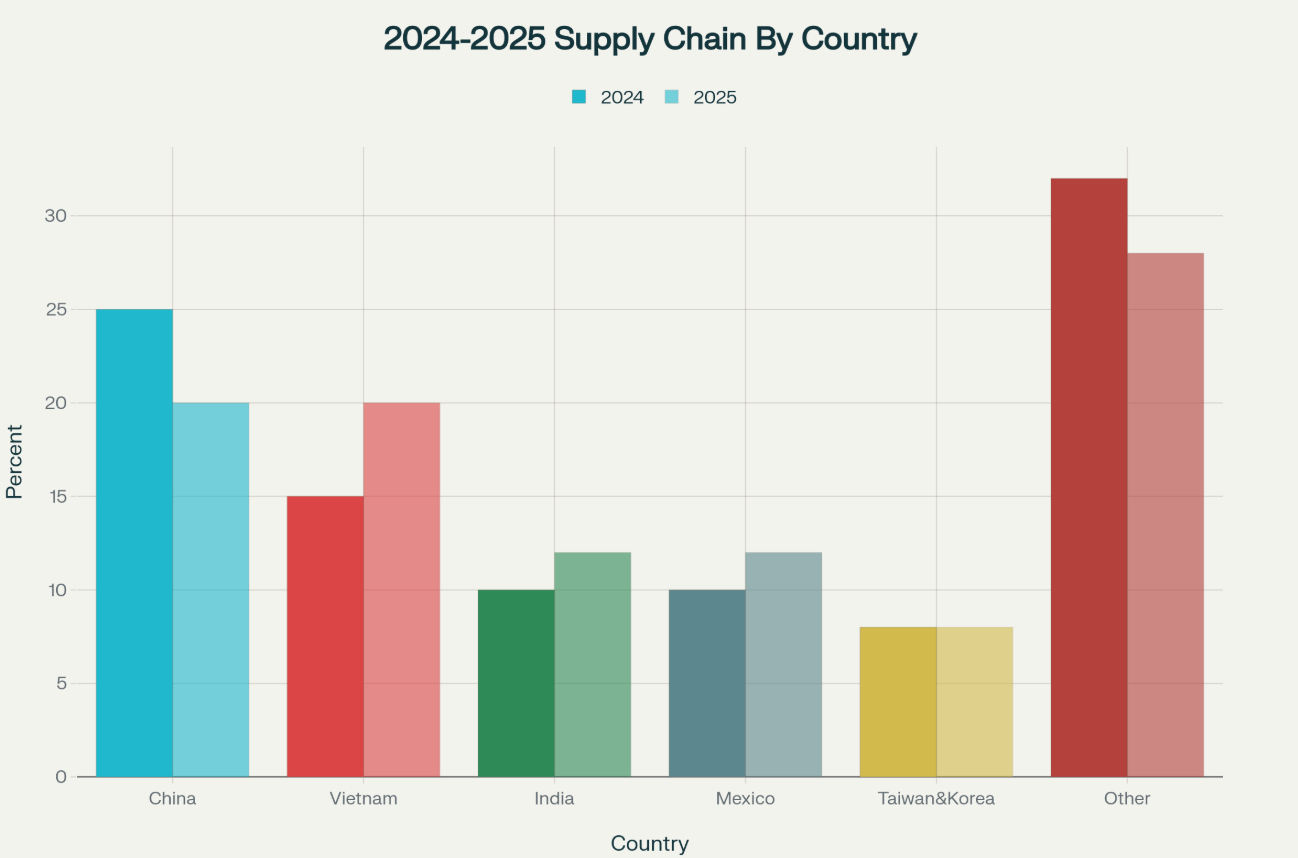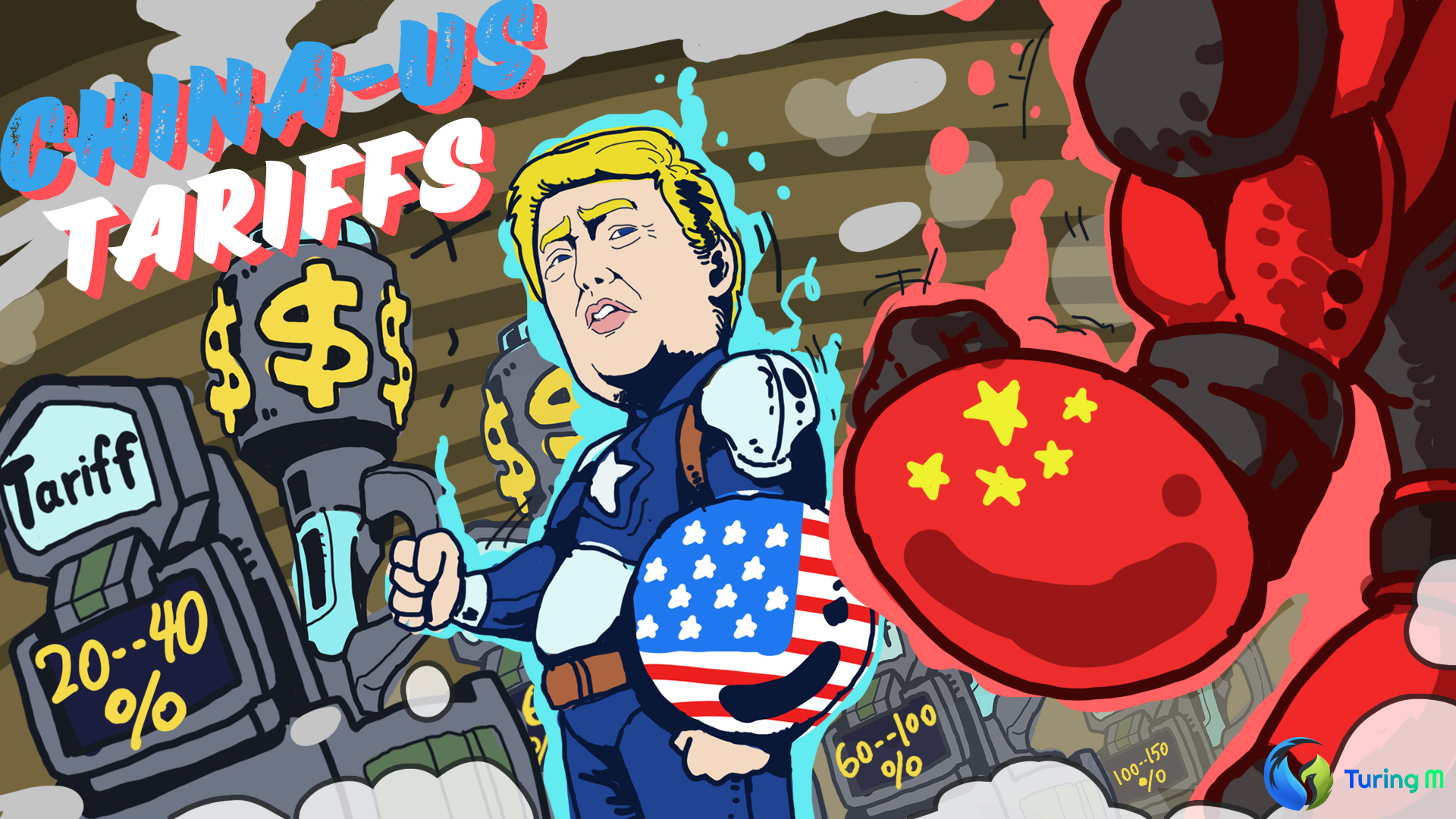
At the turning point of globalization entering the "fragmentation era", the U.S. tariff system on China will evolve from the "Section 301" to a multi-layered mechanism by 2025, completely disrupting cross-border commerce and supply chain landscape. Meanwhile, the Web3 ecosystem represented by blockchain and crypto technologies is becoming a new battlefield for enterprises and capital to seek resilience and opportunities amid turbulence. This article will conduct an in-depth analysis from four dimensions: macro policies, industrial chain restructuring, capital flow, and technological innovation, and provide strategic recommendations for enterprises and investors.
I. Overlapping Tariff Matrix: Cost Vortex under Multiple Legal Authorizations
Since the U.S. launched the "Section 301" tariffs in 2018, additional taxes on China have long exceeded single tax rates of 25% or 7.5%. In early 2025, an additional 20% was imposed based on the International Emergency Economic Powers Act (IEEPA), and in April, another 10% was added through "reciprocal tariffs". Coupled with the still-hanging Section 232 - 25% on steel and aluminum, 50% on copper, and the Section 321 "de minimis" exemption suspended in mid-May, which imposes over 30% fixed tariffs on low-priced e-commerce goods, forming a real tax rate range of 30% to 70%, with some mixed products potentially exceeding 100%. This complexity and opacity are becoming the core means for the U.S. to use multiple acts and multiple reasons (intellectual property, national security, trade deficit, fentanyl crisis) to alternately apply pressure.
II. Global Supply Chain Reconstruction: From China+1 to Geographical Balance
Under the pressure of high tariff towers, enterprises must reshape the global supply chain map. Data shows that Vietnam, India, and Mexico will increase their supply chain share from 15%, 10%, and 10% to 20%, 12%, and 12% between 2024 and 2025. While China's share remains first, it will drop from 25% to 20%, reflecting that "China+1" is no longer an option but has become a business survival strategy.

In this process, enterprises face not only cost considerations but also hidden compliance and traceability risks. Extended cross-border logistics, complex customs classifications, and cash flow pressures caused by maritime transport and tariffs are driving more enterprises to use supply chain visualization and smart contract technologies to achieve multi-site backup and compliance automation.
III. Capital and Hedging: Web3 Financial Havens
Tariff policy's geopolitical risks affect financial markets, with U.S. crypto exchanges experiencing a $223 million capital outflow in early August, closely linked to the RMB-USD exchange rate fluctuating between 7.18 and 7.20 (Chart 2). Against the backdrop of traditional hedging tools failing or becoming more costly, stablecoins and mainstream crypto assets have become "digital safe harbors" for short-term hedging by enterprises and high-net-worth individuals.
Moreover, blockchain's implementation in supply chain traceability and cross-border settlement is providing explosive growth opportunities for Web3 enterprises. Smart contracts can embed tax rates and logistics information for automated clearing; Non-Fungible Tokens and dedicated wallets are spawning DTC (Direct-to-Crypto) e-commerce models, helping Chinese SMEs directly face global consumers with crypto assets, bypassing traditional bank and customs complex processes.
IV. Regulation and Compliance: Opportunities and Challenges under Tightening Boundaries
Facing tariff arbitrage and cross-border capital flows, global regulatory agencies are quickly following up. The U.S. and EU are strengthening KYC/AML reviews of crypto exchanges, planning to include stablecoin cross-border settlements in customs declaration systems; China is vigorously promoting digital yuan (e-CNY) in Southeast Asia and Latin America within its financial sovereignty strategy, countering the U.S. dollar system through "monetary diplomacy". This means Web3 enterprises must seek compliance arbitrage between multiple national regulations while strengthening technical architecture interfaces to ensure parallel fund flow and product compliance.

V. Strategic Recommendations: Dual-Wheel Drive of Resilience and Innovation
- Supply Chain Deep Insight and Diversified Backup Establish full-chain visibility covering second and third-tier suppliers, use blockchain technology to track core raw material (such as rare earth, copper) origins and supply risks, and parallel capacity layout in Vietnam, Mexico, India, and the U.S. mainland.
- Web3 Settlement Network and Compliance Middleware Build a multi-chain stablecoin network, deeply integrate with traditional ERP, WMS, and customs automation systems; deploy smart contract tax engines to achieve dynamic tax rate automatic clearance and settlement, reducing human error and regulatory risks.
- Crypto Hedging and Monetary Strategy Use stablecoins to hedge RMB fluctuation risks, while paying attention to digital yuan's application in Southeast Asian markets, layout e-CNY settlement channels to ensure localized payment and financing convenience.
- Regulatory Sandbox and Cross-Border Compliance Alliance Proactively participate in multi-country regulatory sandbox pilots, collaborate with customs and financial regulators to design a "crypto compliance middleware", and adapt in advance to the new normal of future cross-border e-commerce and capital flow regulations.
- Data-Driven Decision Making: Continuous Dynamic Adjustment Recommend enterprises and investment institutions establish a "Tariff Impact and Supply Chain Risk Dashboard" based on BI and AI, real-time monitoring policy changes, goods flow, and capital trends, to achieve dynamic adjustment and forward-looking layout.
Conclusion: The 2025 China-U.S. tariff war is not just a trade friction, but a watershed of global economic governance and technological innovation paths. Only by building resilient supply chains and dynamic compliance systems centered on Web3 and smart contracts in the fragmented uncertainty can enterprises seize the new round of global innovation dividends in the era of fragmentation.






